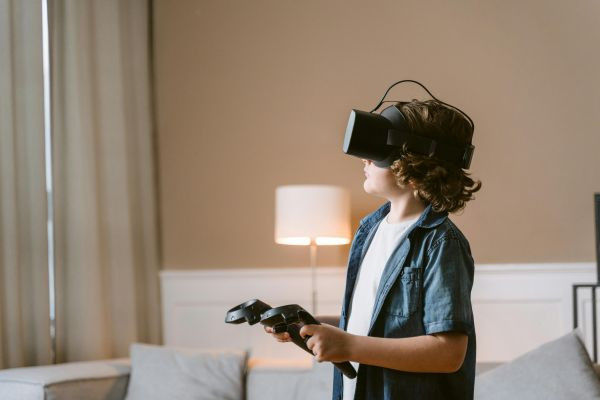Most gamers envision immersive worlds created by video games and see first. Stunning graphics, detailed environments, and lifelike animations certainly rank among the first things that we tend to noti..
12/09/24 • 366 Views
Most gamers envision immersive worlds created by video games and see first. Stunning graphics, detailed environments, and lifelike animations certainly rank among the first things that we tend to notice. However, often, this unsung hero of much emotional depth and immersive experience lies within the sound. From a haunting score of a fantasy epic to the tense soundtrack of a survival horror game, music and audio design have become critical components in defining how one plays the game. In fact, sound can influence emotions, enhance storytelling, and even guide gameplay. Here we look at the multifaceted role of sound in gaming and how music and audio design elevate the player experience.
The Emotional Impact of Music
Perhaps the most powerful tool to set the emotional palette of the game, music is. A memorable soundtrack can elevate the narrative of a game, establish the tone of tension and carry forward the emotional connect between characters and events unfolding on screen. Music can evoke a wide range of emotions that cross the spectrum from joyful and exciting to fearful and sorrowful.
It is this iconic sense of adventure and weight that has given to the hero's journey that has The Legend of Zelda: Ocarina of Time its major theme. It sets such a high level of excitement and anticipation through its grand orchestration following the player through his or her quest with Link. In contrast, Journey's melancholic melodies have the atmospheric depth to emphasize the themes of solitude and connection in the game. The music often leads to emotional highs and lows, which makes moments of triumph or heartbreak all the more memorable and makes sure that the player is emotionally invested in the experience.
The soundtrack for survival horror games like Silent Hill or Resident Evil has a huge role in building tension and unease. The eerie, dissonant sounds that come with the player's exploration of dimly lit corridors heighten the sense of dread. Additionally, the lack of music in those moments is a strong device since silence amplifies the vulnerability that a player character feels. In this way, music and sounds in horror games influence a player's emotions while putting them in an anxious, alarmed, or frightened state as they navigate dark hostile environments.
Sound Effects: Submersion and Gaming Enhancement
Music apart, the overall sound effects are the features that turn a game into an immersive experience for the gamer. The smallest action-be it footsteps of a character or far off roar of an enemy-comes as a carefully crafted sound which brings the game world to life. It keeps informing the player about what surrounds him, what action has been taken, and its resultant outcome.
The use of sound design in open-world games like Red Dead Redemption 2 can really help in building a living, breathing world. For example, the rustling of the wind through the trees or the cries of distant wildlife or even clinking of spurs on the cowboy's boots really adds a lot of realism to the environment and really makes the player feel like they belong there. These soft, organic sounds immerse a game environment and give the players a sense of discovery and connection with their surroundings.
Sound effects also apply this approach to give the player the required feedback. For example, in an action game, the rewarding clinking of hitting the mark with a sword or the thud that occurs on successful hits gives the player the feeling of triumph. The excitement of racing in Forza Horizon increases tenfold with squealing tires or the racing engine as it turns around a curve. Call of Duty or Halo might include some sounds that would give the players cues on how powerful their weapons are or whether they are effective.
Sound effects use does make a great difference in strategic plays within the context of competitive multiplayer games like Overwatch or Valorant. As much as it would determine victory from defeat, subtle sound effects about enemy footfall, that unmistakable noise an ultimate is building to, might provide one information in terms of surroundings with respect to threats and opportunities. End.
Voice acting and storytelling
Modern standard practice in voice acting brings even the most uninteresting gaming titles alive. It gives even simple lines that would otherwise mean nothing so much depth and meaning. As such, the Last of Us or Uncharted just isn't the same without all the voice acting, cultivating complex characters whose emotions actually create something the player feels in itself.
In such games, the voice actors and the sound designers collaborate to get the dialogue set in the right tone and pace of the game. In The Last of Us, the conversation between characters has an emotive burden because the mournful, ambient sounds in the background make for an intimate setting of dialogue. However, relative to Uncharted, the action-oriented dialogue is furnished with swift sound effects to correlate the on-screen action and maintain the thrilling effect.
Locative sound may also work quite an important role in games supporting multiple language usage or dynamic dialogues. This way, for instance, if the original sound and voice acting used would be suited to alternate cultures, emotional depth and emotion would remain constant from one region to another across stories.
Dynamic Audio: Audio changes dynamically with the actions performed by the player.
The most spectacular audio design innovation is surely the dynamic audio. Audio varies with the actions performed by the player. All changes are happening in real time; this is typically applicable in games that involve immense open worlds whereby the audio will differ in various settings in relation to the position of the player, events or state of the game.
For example, in The Witcher 3: Wild Hunt, the music varies with peaceful village scenes and fight scenes. It surges with orchestral scores at the most dramatic fight scenes but is mellow and atmospheric while wandering around the world. It's adaptive music that really guides the player experience by making him feel attached to the world and all of its changing circumstances.
The audio system in Red Dead Redemption 2 is more dynamic than other games. The music builds in all the right moments of the story, and the sounds of nature change depending on the regions that the player is progressing through-from the cities which are always bustling with lots of noise to the peaceful silent wilderness. Such minute detail in sound creates this fluid and immersive experience that just draws players into the world of the game.
Conclusion: The Secret Art of Sound Design
Where visuals might get the eye in the game, at bottom line it is a way that sound—be it in the form of music, audio effects, or voice over—that will be where the fun actually experiences in gaming. It is through creating emotive relationships, building immersion, and providing very essential feedback for game-playing purposes that sounds turn good into a great game.
After all, the role of the sound is only bound to keep growing as gaming technology goes forward. With the up rise of dynamic audio, high-quality voice acting, and complicatedly composed sound, the audio will truly define its purpose and depth into gaming. So, the next time any player loads up into the game, the music and sounds they're hearing will not be in the background; instead, they will form a vital element that constitutes the general playing experience of this game.









